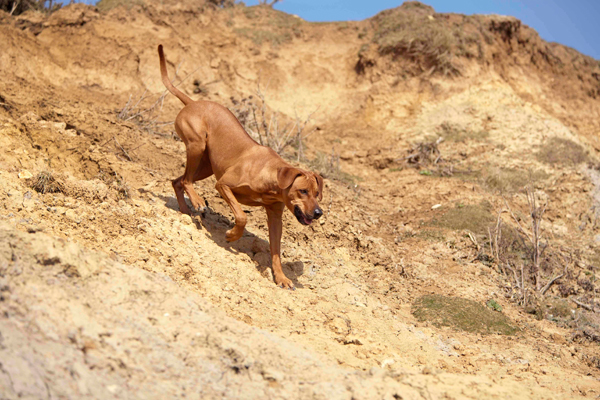The foundation stock of the Rhodesian Ridgeback was developed by the first European settlers in South Africa to fill their specific needs for a serviceable hunting dog in the wilds.
The Dutch, Germans and Huguenots who migrated to South Africa in the 16th and 17th centuries brought with them Danes, Mastiffs, Greyhounds, Salukis, Bloodhounds and other breeds. However, for more than 100 years from 1707, European immigration was closed; consequently, the importation of additional dogs of these or other breeds was not possible. Good hunting dogs, therefore, became hard to come by and their value was high. The settlers needed a dog that could flush a few partridge, pull down a wounded stag, or guard the farm from marauding animals and prowlers at night.
They also needed a dog that could withstand the rigours of the African bush, hold up under drastic changes in temperature, from the heat of the day to nights below freezing, and go a full 24 hours or more without water if need be.
They required a short-haired dog that would not be eaten alive by ticks. In addition, the settler needed a companion that would stay by him while he slept in the bush and that would be devoted to his wife and children.


